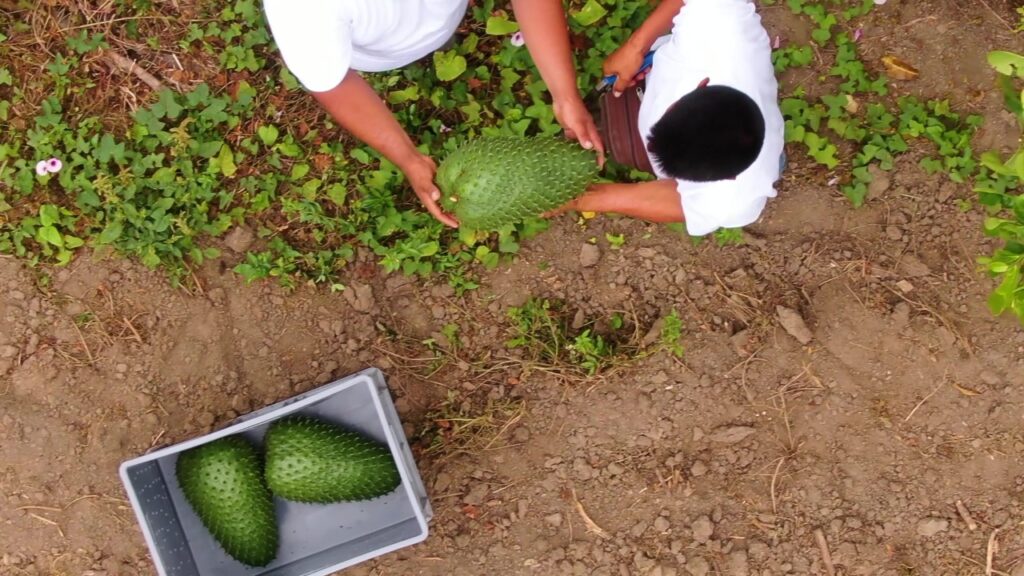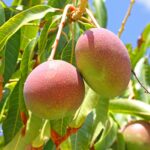Ecuadorian soursop industry betting on the U.S. market to increase global consumption

A rather unknown fruit in the U.S. market is trying to make its way to supermarket shelves around the country from Ecuador. Soursop, native to the warm and tropical regions of the Americas is large and oval-shaped and provides a series of health benefits.
Ecuador has 2,000 hectares of soursop cultivated currently. About 5% corresponds to organic crops and 200 hectares are in the process of transition to conform with European Union regulations on organic farming.
Daniel Ortega, president of ASOGUANABANA from Ecuador, shared details with FreshFruitPortal.com of the roadmap for enabling access to other international markets such as the U.S.
Regarding productivity, Ortega indicated that conventional cultivation has an average production of 20 metric tons per hectare per year, while organic ranges from 15 to 17 metric tons.
Growers have developed a year-round production system that incorporates larger efficiency in water management and overall sustainability. The peak harvest season “can go from the end of November to March," said the president of the organization.
Soursop in the field
The agronomic management required by soursop, according to Ortega, needs three fundamental elements, beginning with the formation of the tree, “the capacity and productive life will depend on the structure of the tree.”
“Timely maintenance and formative pruning are essential”, he says. “Since the fruit can weigh 7 to 8 kgs, with a maximum of 30 fruits at the same time on the tree. Given the weight of the fruit, it is necessary for growers to have a very resistant tree, well-formed and with good nutrition.”
“Another relevant agronomic management for soursop is pollination, which must be done manually, making it a highly labor-demanding crop and particularly suitable for skills from women collaborators. In this sense, the president of ASOGUANABANA indicated that the crop has a labor ratio that goes “between 1.7 and 1.8 men per hectare,” added Ortega.
The third point is the use of covers, "this is because many Lepidoptera and Diptera like to inoculate their eggs in the fruit or flowers. Therefore, it must be physically covered, to protect it without the need to apply pesticides,” said Ortega.
Crop profitability
As there is conventional and organic cultivation, the cost structure is modified, as explained by Ortega "organic products are more expensive because they require more labor."
In Ortega's opinion, an important factor that triggers the profitability of the business is the price in international markets. He adds that some producers give soursop added value by turning the product into pulp and some are lyophilizing it, that is, making powder from the fruit. The leaf is also processed, for the production of tea and essential oils can also be extracted.
"Depending on the level of added value, profitability is higher. In many cases, producers tend to diversify with other fruits and those who only focus on soursop and sell fresh fruit only face less profitable conditions. Vertical integration is key for a sustainable value-chain of an emerging niche market in the context of global uncertainty"
Main markets
The domestic market of Ecuador – a dollarized economy with an intrinsic high-cost of labor due to social safeguards - is relevant with respect to price formation.
They are implementing significant efforts to enable new export market opportunities.
"We have oriented distribution of fresh soursop towards Europe because we already have the phytosanitary conditions for entry. 2023 has been targeted to consolidate supply chain relationships," said Ortega.
He commented that they are currently in negotiations to promote new markets
"We are working with USDA APHIS, to finalize pests risk management protocols and enable market entry for soursop. Since it is one of the 10 products that Ecuador has prioritized in its bilateral agreement with the United States, we have high expectations that the market for fresh fruit can be opened,” indicates Ortega.
“All our efforts are directed to ensure that there is no need for the use of irradiation as it would affect the possibility to comply with organic standards," he added.
Regarding processed products, he indicated that the European and United States markets are very attractive.
“Especially Europe for its considerations for organic products and the positive impact on producers and rural development. We have had a very good experience so far. In particular, with Germany Import Promotion Desk that has chosen organic soursop as a key superfruit to support market uptake,” said Ortega.
He indicated that as a farmers’ organization, they have received a positive response from the Ecuadorian government. A specific request has been to include soursop as a product in each trade agreement that is signed.
Ortega explained that they face a great challenge to be able to reach distant markets with fresh fruit.
"Since it is very perishable, in the best of cases it has a post-harvest life of 12 to 14 days in refrigerated conditions and that gives us little transportation capacity unless it is by air, which increases costs,” he said.
In order to conquer the markets of the United States and Europe, Ortega commented that they are learning from the experience of Chile, in the use of waxes. And they are analyzing ethylene capture technology among other options.
Adaptation to climate change
In Ortega’s opinion, in terms of sustainability, it is a completely beneficial fruit tree because it is deforestation-free, nature-positive, and climate-resilient.
“The rootstock we use in Ecuador is native, very resistant, it has no disease or pathogen problems, and the graft is a high-yielding variety obtained from Brazil or Colombia. Therefore, they are also very resistant to changes in temperature and drought,” he said.
He added, “Thinking in a context of climate change and extreme events, changing rain patterns and water scarcity, soursop is a fruit to keep in mind at the investment level. It allows the management of risks and insurance costs while contributing with a negative carbon footprint towards beyond-value chain decarbonization strategies.”
Challenges of the Ecuadorian soursop
The Association of Producers of Organic Soursop of Ecuador has identified short, medium, and long-term trade objectives.
“This year, we are focused on opening the United States market and making the first-scale exports to Europe of both fresh and processed fruit. We need to improve marketing and export channels."
He added that they have established a strategic alliance with the Export Promotion Institute, the Ministry of Agriculture, the instance where the soursop technical round table was established, where "priorities have been defined and we are focused on joint shared value initiatives including synergies with the European Union to improve market access.”
Ortega indicated that in the medium term "we expect the installed processing and value adding capacities to have a strong component of expansion and access to the market by 2025 because they require safety and quality certifications, which requires more time and investment”.
Towards the year 2030, the chain is committed to global climate goals, "the soursop tree is the one that captures carbon, so we can talk about negative carbon at the production site. We are seeking partners that share our vision to consolidate a sustainable value chain, including transportation and logistics to the destination that can achieve carbon neutrality”.
A relevant point in ASOGUANABANA leadership is its participation as part of the CREA project, "financed within the framework of the bilateral agreement between Ecuador and the European Union, which promotes the access of organic products to Europe and where the soursop value chain has shown promising potential for positive social and environmental impact including gender equality,” said Ortega.
That is the central challenge, marketing and adding value to extend the useful life of the fruit and ensure distribution lines in Europe that can introduce incentives for potential trading partners in other markets such as the United States," he concluded.







































